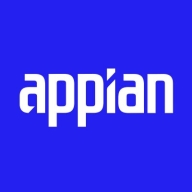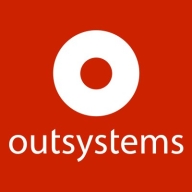

Appian and OutSystems compete in the low-code application development platform category. OutSystems appears to hold the upper hand in terms of flexibility and component reuse.
Features: Appian is recognized for its rapid development with low-code, comprehensive business process workflows, and integrated architecture. It provides seamless integration with other systems and offers fast ROI. OutSystems is known for robust visual modeling capabilities, easy deployment, and high component reuse. It benefits from a strong community for shared components and offers a streamlined deployment process across multiple platforms.
Room for Improvement: Appian needs better customization flexibility, improved integration with certain technologies, and offline mobile capabilities. Its SAIL language presents challenges for inexperienced developers. OutSystems has high pricing, poor performance under certain conditions, and lacks comprehensive built-in reporting tools. It also requires advanced knowledge for handling asynchronous tasks.
Ease of Deployment and Customer Service: Both Appian and OutSystems offer cloud and on-premises deployment models. Appian excels in hybrid environments and is praised for excellent technical support, though it can be limited at times. OutSystems offers good support but can be slow in resolving complex issues. Appian is noted for rapid and responsive customer service.
Pricing and ROI: Appian is considered cost-effective with flexible licensing and strong ROI for digital transformation investments. The licensing structure, though somewhat confusing, offers competitive pricing. OutSystems is more expensive, potentially limiting its appeal to smaller enterprises, but its pricing is justified by its development speed. Both platforms promise good ROI, with Appian having a quicker impact on financial metrics within the first year.
They see return on investment in terms of cost savings, time savings, more efficient processes, and more efficient employees.
Appian is very efficient, allowing us to build a lot of applications within a financial year, making it cost-effective.
Developing that same project in OutSystems can be completed in around 40 to 50% less time, requiring only six resources.
The technical support for Appian rates as 10 out of 10 because they have a great support team.
Their customer service is responsive, and the team is very prompt for support.
The technical support is generally good.
Many helpful videos and documentation are available on the OutSystems site, making it relatively easy to learn the platform.
On a scale of one to 10, Appian rates as a nine for scalability.
Initially, without much coding, I can easily handle five thousand records.
Appian is scalable, but it depends on how you build your applications.
They can be deployed vertically and horizontally, supporting as many deployments as needed.
It depends on how it has been designed and how it has been configured.
The stability of Appian would rate as nine, as it's a stable environment.
It has room to improve for use cases where the users are public facing, where anonymous users could come to a site and run a business workflow or interact with some data.
I would like to see more enhancement in the user interface to allow more freedom in designing the sites and pages.
If there is a very complex process that includes a lot of data transitioning and memory-centric processes, it consumes a lot of memory.
It is crucial to be aware of which module corresponds to which application in real-time projects, as there are multiple applications.
What I would like to see is more servicing business analysts in the next release of OutSystems.
I would like to see more integration between the use of artificial intelligence to speed up the process delivery time.
On the pricier side, both Appian and Pega are enterprise-level solutions, placing them on the slightly higher side.
The pricing of Appian is based on the number of users and generally ranges from 70 to 100 USD per user per month.
The price of Appian, on a competitive landscape, is a little bit on the higher side for companies, rating maybe a 6.5.
Subsequent users can be added at an additional cost per user; exact pricing details can be found on the OutSystems site.
The zero-code integration feature is remarkable, allowing for ease of data transfer and workflow enhancement.
Appian also utilizes AI for business users, providing a feature called process each view, enabling business users to create their own dashboards, reports, and gain insights from their data and processes using artificial intelligence.
I can create tables, perform database-related activities, and create multiple tables.
OutSystems offers a lot of reusable components and solutions that I can simply drag and drop and use, which has a significant impact on project delivery time.
I have recommended it in situations where very rigid enterprise structures are blocking them from being agile.
OutSystems officially supports various integrations and also includes an API discovery tool for consuming and exposing services, providing a lot of information about incoming URLs, similar to how we use Postman.
| Product | Market Share (%) |
|---|---|
| Appian | 9.5% |
| OutSystems | 8.3% |
| Other | 82.2% |


| Company Size | Count |
|---|---|
| Small Business | 20 |
| Midsize Enterprise | 9 |
| Large Enterprise | 41 |
| Company Size | Count |
|---|---|
| Small Business | 18 |
| Midsize Enterprise | 7 |
| Large Enterprise | 29 |
Appian is a unified low-code platform and solution used by businesses to build enterprise applications and workflows. This product adapts to the needs of clients and the technologies they are already using to combine their data in a single workflow and maximize resources. The platform has four main components through which it transforms the work process for companies of various sizes. They are:
Appian is utilized across a diverse set of industries, including automotive and manufacturing, energy and utilities, education, financial services, telecom and media, transportation, retail, insurance, healthcare, and life sciences. The most frequent use cases of Appian are customer journey, governance, risk and compliance, operational efficiency, supply chain, distributed order management, and environmental, social, and governance (ESG) management.
Appian Features
Appian has various features that allow users to create solutions for their businesses. These features can be separated into a few groups according to function, including automation, low-code application development, and integrations and data. Some of the most frequently used features of Appian include:
Appian Benefits
The benefits of using Appian include:
Reviews from Real Users
A practice leader - digital process automation at a computer software company values Appian highly because the product is easy to develop, low-code, and has a good user interface.
Alan G., an advisory board member at Codecon VR, Appian offers a clear application life cycle, easy to learn documentation, and comes with a fundamentals course.
OutSystems is a platform for low-code application development that unites design, code, and deployment to simplify development so any business can create innovative solutions in a timely manner. There are various use cases an organization can employ with OutSystems, including:
OutSystems offers faster development and deployment times than hand-coding while delivering unique and personalized solutions to its customers. The main focus of OutSystems is high-performance low code which enables businesses to create functional products that answer their needs. It offers clients the ability to develop enterprise-grade applications with a high level of security.
The product stands out from its competitors as it offers:
It ensures its clients that the applications built using this platform are as scalable as hand-coded ones while increasing workspace productivity and evolving applications’ capabilities.
OutSystems Features
OutSystems has various features through which users can develop and deploy highly efficient applications and other products. Some of the features include:
OutSystems Benefits
The solution offers a wide array of benefits to companies that utilize it in their application development. Some of these benefits include:
Reviews from Real Users
Harikrishnan R., a technical lead at Netlink Software Group America Inc, likes OutSystems because the tool helps with validation, offers good features, and is reliable.
An owner at a consultancy thinks OutSystems is versatile with great scalability and great technical support.
We monitor all Low-Code Development Platforms reviews to prevent fraudulent reviews and keep review quality high. We do not post reviews by company employees or direct competitors. We validate each review for authenticity via cross-reference with LinkedIn, and personal follow-up with the reviewer when necessary.